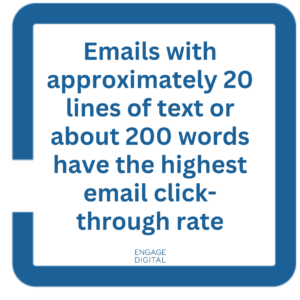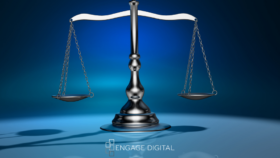Email marketing continues to be a powerful tool for businesses to connect with their audience, nurture leads, and build lasting customer relationships. With billions of people actively using the digital inbox globally, email offers a direct and effective way to engage potential customers and drive conversions.
We all receive emails daily, but to make the most out of your email campaigns, it’s crucial to employ best practices that engage and resonate with your audience. Nothing is worse than permanently ending up in someone’s spam or having the message deleted before it’s even opened.
Nurturing Leads
To effectively nurture leads through email marketing, it is crucial to segment your audience based on their preferences, behaviors, and demographics. This allows you to create targeted and personalized email campaigns that resonate with each segment, increasing the chances of engagement and conversions.
They must also nurture these leads to guide them through the customer journey and eventually convert them into loyal customers. Companies that excel at lead nurturing generate 53% more sales-ready leads at a 33% lower cost.
Creating Professional Copy
The success of your email marketing campaigns relies heavily on the quality and relevance of your email content. A study by CampaignMonitor found that emails with personalized subject lines are 26% more likely to be opened.
Start by grabbing your recipients’ attention with a captivating subject line that grabs their interest. The subject line may be the most essential part of the email process. It’s a gateway to the actual message body and determines whether recipients will open or ignore your message. According to research by HubSpot, subject lines with 6-10 words generate the highest open rates.
Incorporate personalization wherever possible, using the recipient’s name or referencing their previous interactions with your brand. Additionally, ensure your email content provides value by offering helpful information, exclusive discounts, or access to premium content.
To optimize readability, keep your email content concise and scannable. Break up the text into short paragraphs, use bullet points, and include clear and compelling calls to action. Visual elements such as images and videos can also enhance the appeal of your emails and make them more engaging.
Avoid using all capital letters or excessive punctuation marks, as they can trigger spam filters or appear overly promotional. No one wants to be screamed at through their computer screen. Instead, focus on personalization by including the recipient’s name or referencing their previous interactions with your brand.
Concise Emails
 Keeping marketing emails concise and to the point is often more effective than lengthy, drawn-out content. Today’s consumers are inundated with information and often have limited time to sift through it all. According to a study by Constant Contact, emails with approximately 20 lines of text or about 200 words had the highest email click-through rates. Overly lengthy emails can overwhelm recipients or get lost in the digital noise.
Keeping marketing emails concise and to the point is often more effective than lengthy, drawn-out content. Today’s consumers are inundated with information and often have limited time to sift through it all. According to a study by Constant Contact, emails with approximately 20 lines of text or about 200 words had the highest email click-through rates. Overly lengthy emails can overwhelm recipients or get lost in the digital noise.
Shorter emails can also be easier to digest on mobile devices, which account for a significant portion of email opens. These concise, compelling messages respect the recipient’s time and attention span. They get straight to the point, highlighting the main message or offer without unnecessary fluff.
Moreover, shorter emails allow for clear and focused calls to action. Readers can quickly understand what action they’re being asked to take, which can help boost engagement and conversion rates. Thus, brevity can indeed be the soul of effective email marketing.
Automation & Drip Campaigns
You can deliver targeted messages at the right time by automating your email workflows, based on predefined triggers or customer actions. According to a study by Forrester, companies that automate their lead nurturing processes see a 50% or more significant increase in revenue within six to nine months.
Drip campaigns allow you to deliver a series of emails over time, gradually guiding leads through the conversion funnel. Start by mapping out your customer journey and identifying key touchpoints where email communication can be most effective. This could include welcome emails, educational content, product recommendations, or abandoned cart reminders.
A/B Testing & Analytics
To optimize your email marketing efforts, it is essential to analyze and refine your strategies regularly. A/B testing is a powerful technique that allows you to compare different versions of your emails to identify the most effective elements. Test variables such as subject lines, email copy, call-to-action buttons, and visuals to continually improve your campaigns.
Utilize analytics tools provided by your email service provider to gain valuable insights into your campaign performance. Track metrics like open rates, click-through rates, conversion rates, and unsubscribe rates to measure the effectiveness of your email content and make data-driven decisions.
Segment Your Email List
For organizational purposes, segment your email list based on specific criteria. When dividing your subscribers into smaller groups with similar characteristics or behaviors, you can deliver targeted and personalized content that speaks directly to interests and needs.
Segmentation allows you to craft tailored messages, ensuring recipients receive relevant information rather than generic content. According to a study by Mailchimp, segmented email campaigns achieved 14.31% higher open rates and 90% higher click-through rates than non-segmented campaigns.
To segment your email list effectively, consider factors such as demographics, past purchase behavior, engagement levels, and interests. Using customer relationship management (CRM) software or email marketing platforms, you can automate the process and send the right message to the right audience at the right time.
Provide Valuable Content & Offers
Your email content should offer genuine value to your subscribers. When sending your message, be sure to provide useful information, educational resources, or exclusive offers in which you can establish trust and position your brand as reliable.
Consider using a mix of content formats, such as blog articles, videos, infographics, or downloadable guides, to cater to different preferences. Additionally, include clear and compelling calls-to-action (CTAs) that prompt readers to take the desired action, such as visiting your website, purchasing, or signing up for a webinar.
According to the DMA, for every $1 spent on email marketing, the average return on investment (ROI) is $42. By delivering valuable content and enticing offers, you can maximize the chances of conversions and ultimately boost your revenue.
Effective email marketing revolves around nurturing leads and building lasting relationships. By employing best practices such as personalizing content, segmenting email lists, and leveraging automation, businesses can enhance engagement and drive conversions. Coupled with valuable content and enticing offers, these strategies ensure a high ROI, solidifying email marketing’s role as a powerful tool in the digital landscape.






